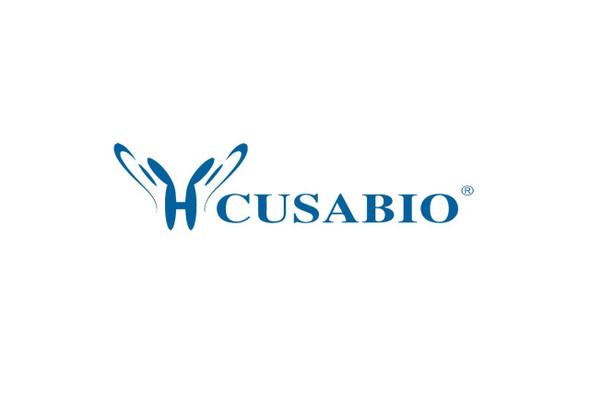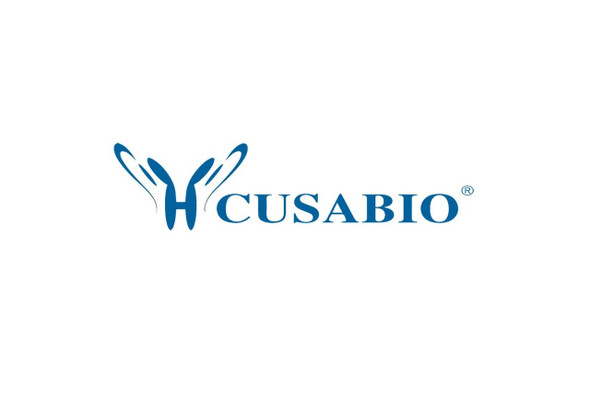Cusabio Virus & Bacteria Recombinants
Recombinant Naja kaouthia Alpha-cobratoxin | CSB-EP365543NAF
- SKU:
- CSB-EP365543NAF
- Availability:
- 3 - 7 Working Days
Description
Recombinant Naja kaouthia Alpha-cobratoxin | CSB-EP365543NAF | Cusabio
Alternative Name(s): Alpha-elapitoxin-Nk2a Short name:Alpha-EPTX-Nk2a Long neurotoxin 1 Siamensis 3
Gene Names: N/A
Research Areas: Others
Organism: Naja kaouthia (Monocled cobra) (Naja siamensis)
AA Sequence: IRCFITPDITSKDCPNGHVCYTKTWCDAFCSIRGKRVDLGCAATCPTVKTGVDIQCCSTDNCNPFPTRKRP
Source: E.coli
Tag Info: N-terminal 10xHis-GST-tagged and C-terminal Myc-tagged
Expression Region: 1-71aa
Sequence Info: Full Length
MW: 37.8 kDa
Purity: Greater than 85% as determined by SDS-PAGE.
Relevance: Monomer: binds with high affinity to muscular (alpha-1-beta-1-gamma-delta (CHRNA1/CHRNB1/CHRNG/CHRND) nAChR) (IC50=4.5 nM on Torpedo californica membranes) and neuronal alpha-7/CHRNA7 nicotinic acetylcholine receptors (IC50=105 nM).2 Publications Homodimer: binds with high affinity (but lower than the monomeric form) to muscular (IC50=9.7 nM) and with low affinity to neuronal alpha-7/CHRNA7 nAChRs (IC50=1370 nM).However, it acquires (compared to the monomeric form) the capacity to block alpha-3/beta-2 (CHRNA3/CHRNB2) nAChRs Heterodimer with cytotoxin 3 (AC P01446): is slightly more active than the homodimer in inhibiting alpha-7 nAChR and is considerably more active in blocking the alpha-3-beta-2 nAChR. The monomeric form has no effect on alpha-3/beta-2 (CHRNA3/CHRNB2) nAChR. It does not show any blockade of the nicotine-evoked release of dopamine and does not affect ACh release.
Reference: "Naturally occurring disulfide-bound dimers of three-fingered toxins: a paradigm for biological activity diversification." Osipov A.V., Kasheverov I.E., Makarova Y.V., Starkov V.G., Vorontsova O.V., Ziganshin R.K., Andreeva T.V., Serebryakova M.V., Benoit A., Hogg R.C., Bertrand D., Tsetlin V.I., Utkin Y.N. J. Biol. Chem. 283:14571-14580(2008)
Storage: The shelf life is related to many factors, storage state, buffer ingredients, storage temperature and the stability of the protein itself. Generally, the shelf life of liquid form is 6 months at -20?/-80?. The shelf life of lyophilized form is 12 months at -20?/-80?.
Notes: Repeated freezing and thawing is not recommended. Store working aliquots at 4? for up to one week.
Function: Monomer
Involvement in disease:
Subcellular Location: Secreted
Protein Families: Snake three-finger toxin family, Long-chain subfamily, Type II alpha-neurotoxin sub-subfamily
Tissue Specificity: Expressed by the venom gland.
Paythway:
Form: Liquid or Lyophilized powder
Buffer: If the delivery form is liquid, the default storage buffer is Tris/PBS-based buffer, 5%-50% glycerol. If the delivery form is lyophilized powder, the buffer before lyophilization is Tris/PBS-based buffer, 6% Trehalose, pH 8.0.
Reconstitution: We recommend that this vial be briefly centrifuged prior to opening to bring the contents to the bottom. Please reconstitute protein in deionized sterile water to a concentration of 0.1-1.0 mg/mL.We recommend to add 5-50% of glycerol (final concentration) and aliquot for long-term storage at -20?/-80?. Our default final concentration of glycerol is 50%. Customers could use it as reference.
Uniprot ID: P01391
HGNC Database Link: N/A
UniGene Database Link: N/A
KEGG Database Link: N/A
STRING Database Link: N/A
OMIM Database Link: N/A









